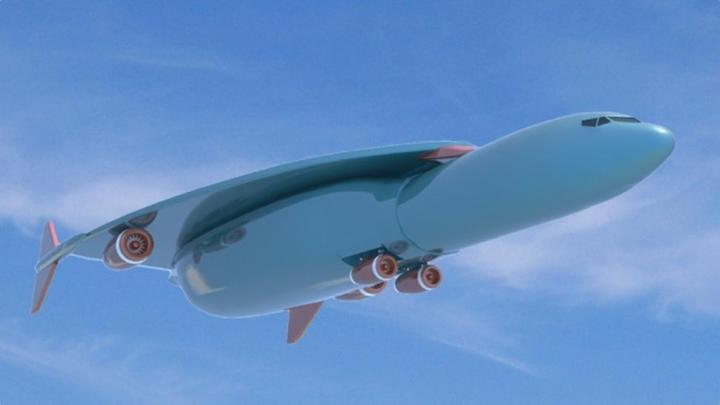
It sounds crazy, but believe it or not, aerospace manufacturer Airbus just inched a bit closer to making this a reality. Just last month, the company’s patent application for a “ultra-rapid air vehicle and related method of aerial locomotion” was approved by the US Patent and Trademark Office. Basically, Airbus inventors Marco Prampolini and Yohann Coraboeuf have developed a completely feasible plan for building passenger planes capable of going 4.5 times the speed of sound — or quicker than the fastest piloted jet ever created.
If Airbus’ hypersonic jet actually has the ability to reach speeds like this, it’s estimated that the jet would be able to make trans-Atlantic trips like New York City to London in just one hour, San Francisco to Paris in only three hours, or a trans-Pacific flight from Los Angeles to Tokyo in roughly three hours. For comparison sake, a trip from NYC to London takes around seven to eight hours for typical passenger planes — so it goes without saying that, if realized, this plane could revolutionize air travel.
There are still some big hurdles to overcome before this plane becomes a reality, though. One of the biggest concerns facing Airbus’ jet lies with stifling the sonic boom effect it will inevitably have while in the air. Problems such as this have historically plagued similar aircraft — i.e. the Mach 2 Concorde built in the 1970s — as people don’t typically enjoy a steady stream of sonic booms disturbing their day-to-day. Airbus claims the aerodynamics of its hypersonic jet were specifically designed to limit such effects and to greatly reduce sonic booms once the jet achieves multiple Mach speed.
As for the operation of the jet, the patent outlines the several different types of engines which would simultaneously work during flights. During takeoff, the jet would utilize two turbojets, along with a rear-mounted rocket motor, to propel the jet up in to the sky vertically — as if it were launching like a rocket. As the jet approaches the speed of sound, the two turbojets would shut down, leaving only the rocket motor active to lift the plane to its cruising altitude of over 100,000 feet. A pair of wing-mounted ramjets would then activate and thrust the jet to its top speed of roughly Mach 4.5.
Because Airbus’ patent only just received a seal of approval — as well as the fact the jet might only hold 20 or so passengers — production of this hypersonic jet won’t likely happen for a number of years, if at all. Still, it’s fun to daydream over the prospect of, on a whim, hopping a flight in New York City and getting to London just one hour later. Keep your fingers crossed and it might be possible by 2020!


